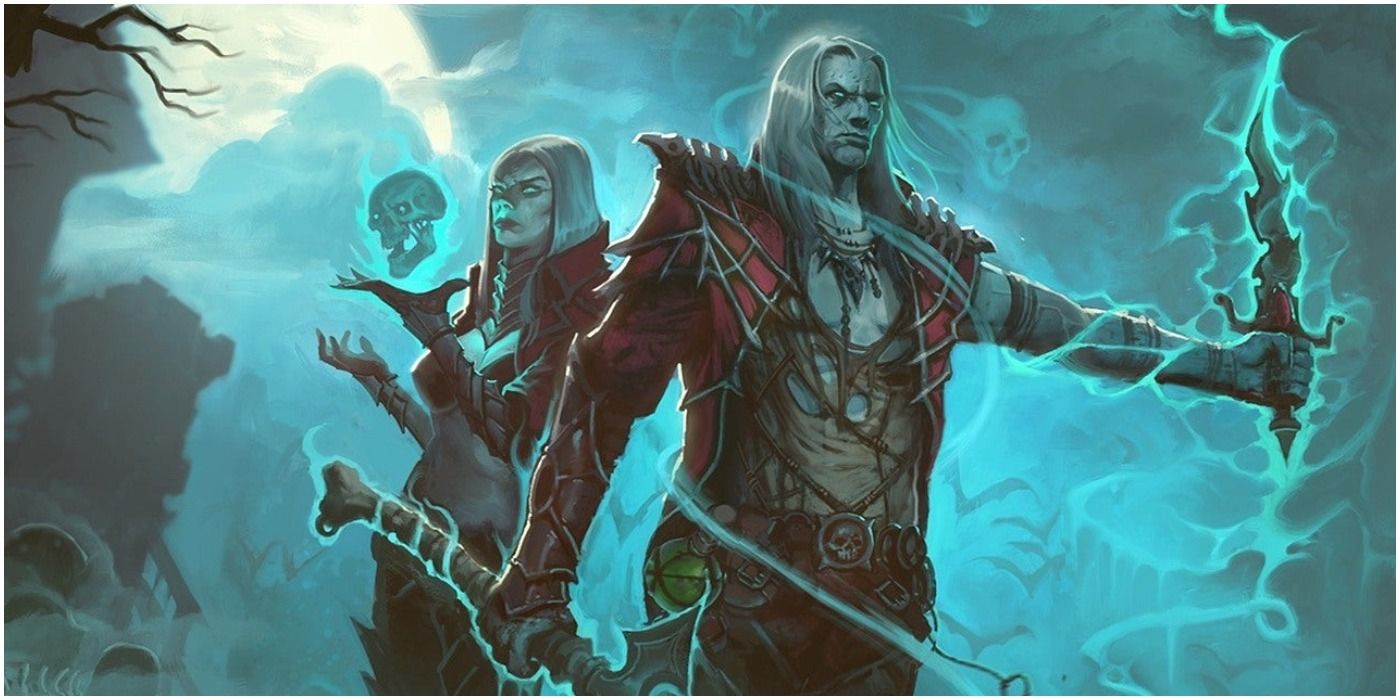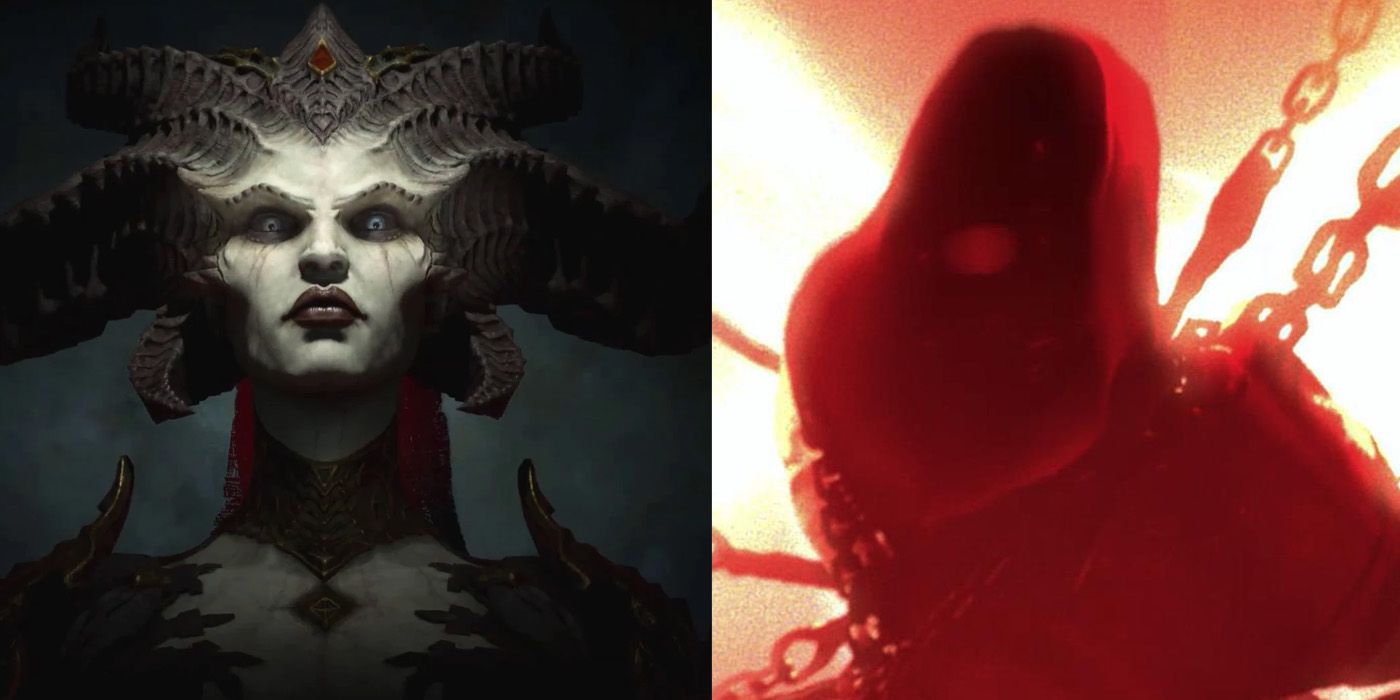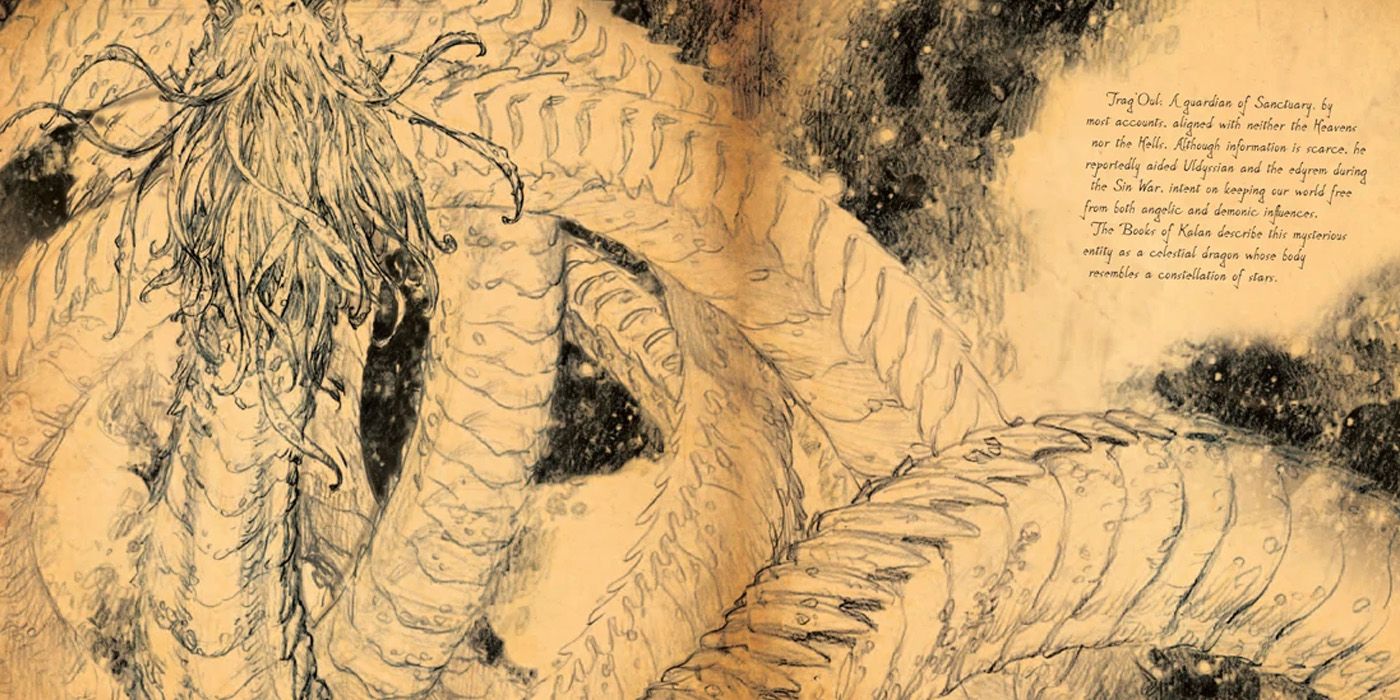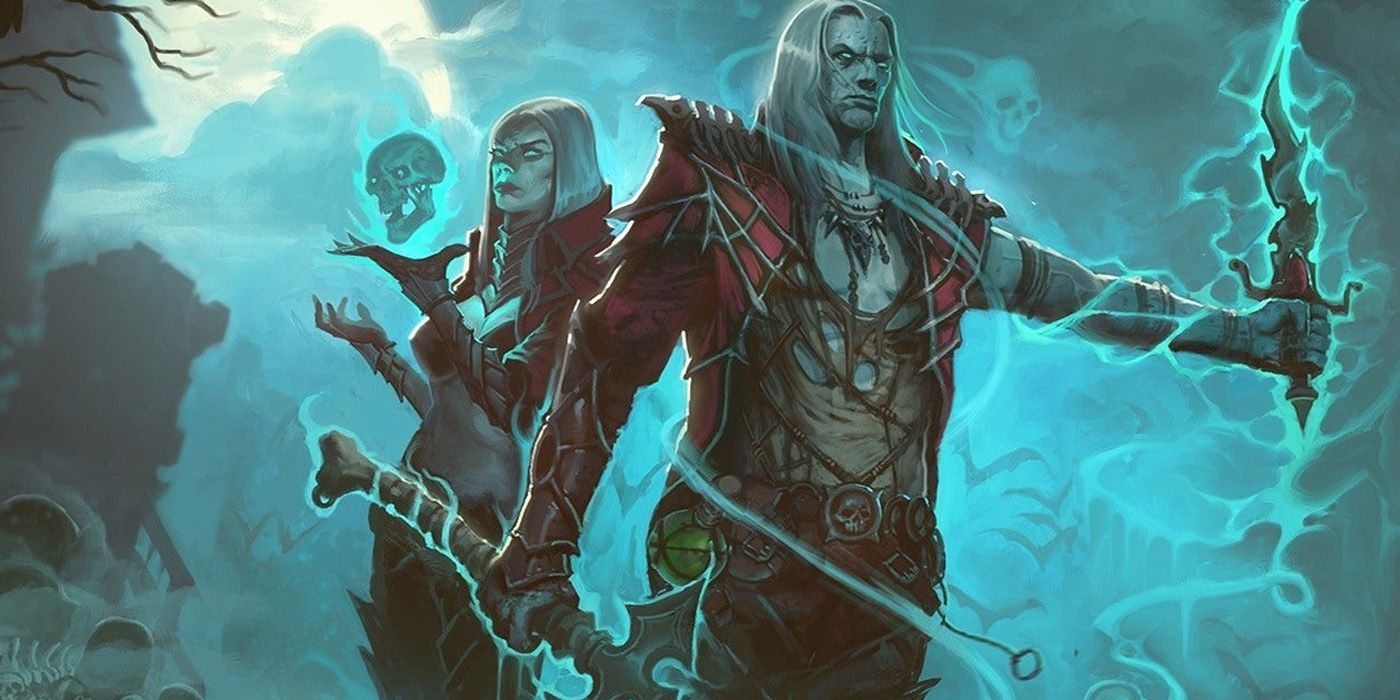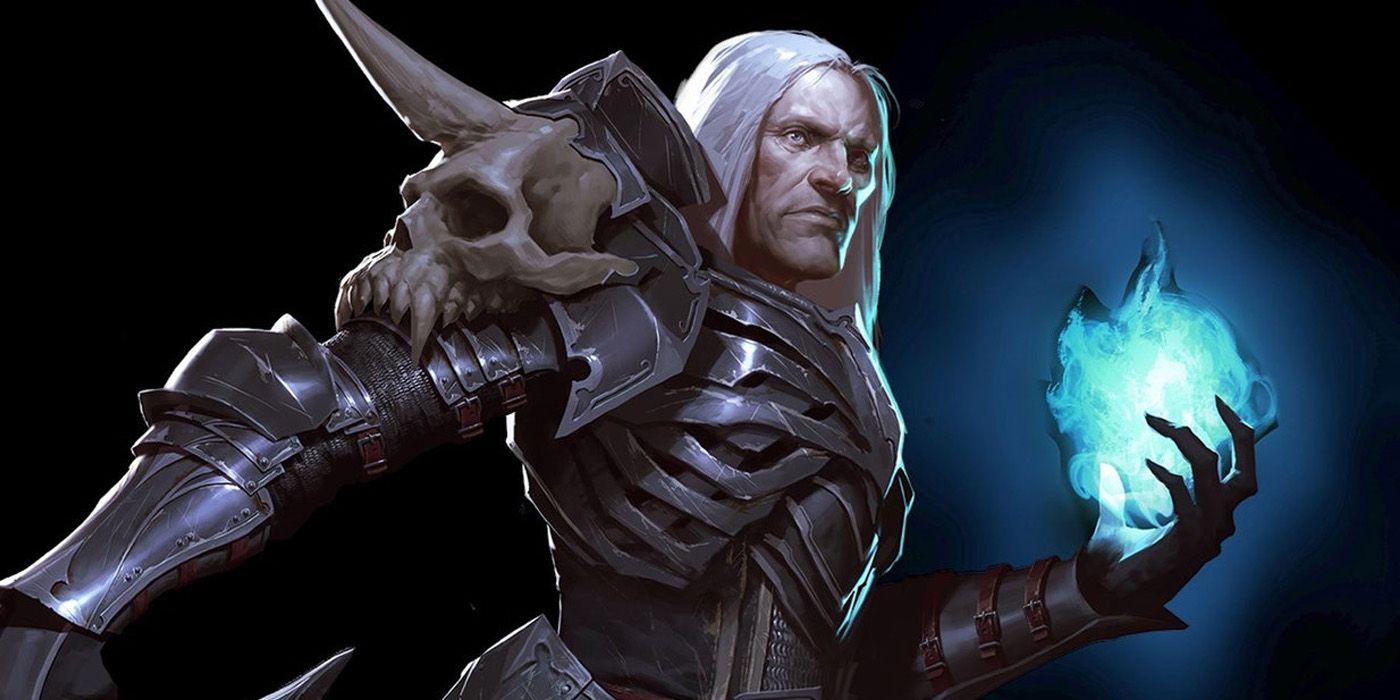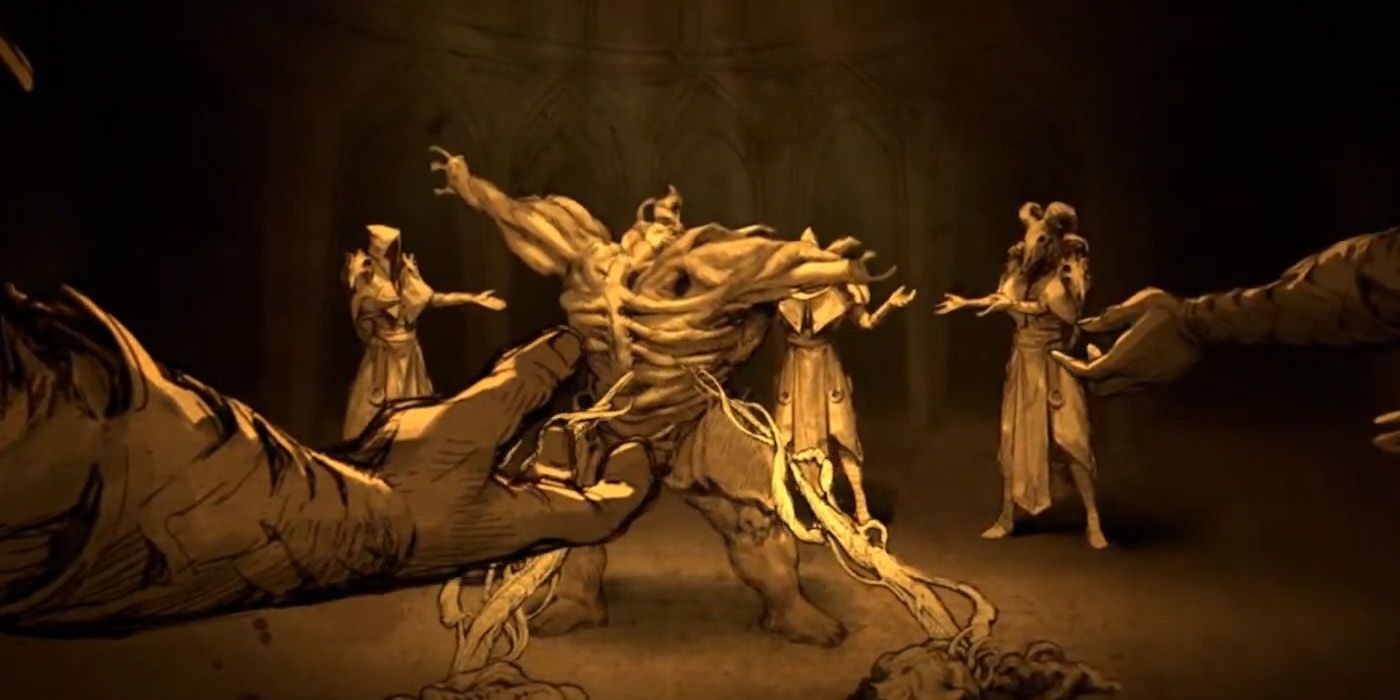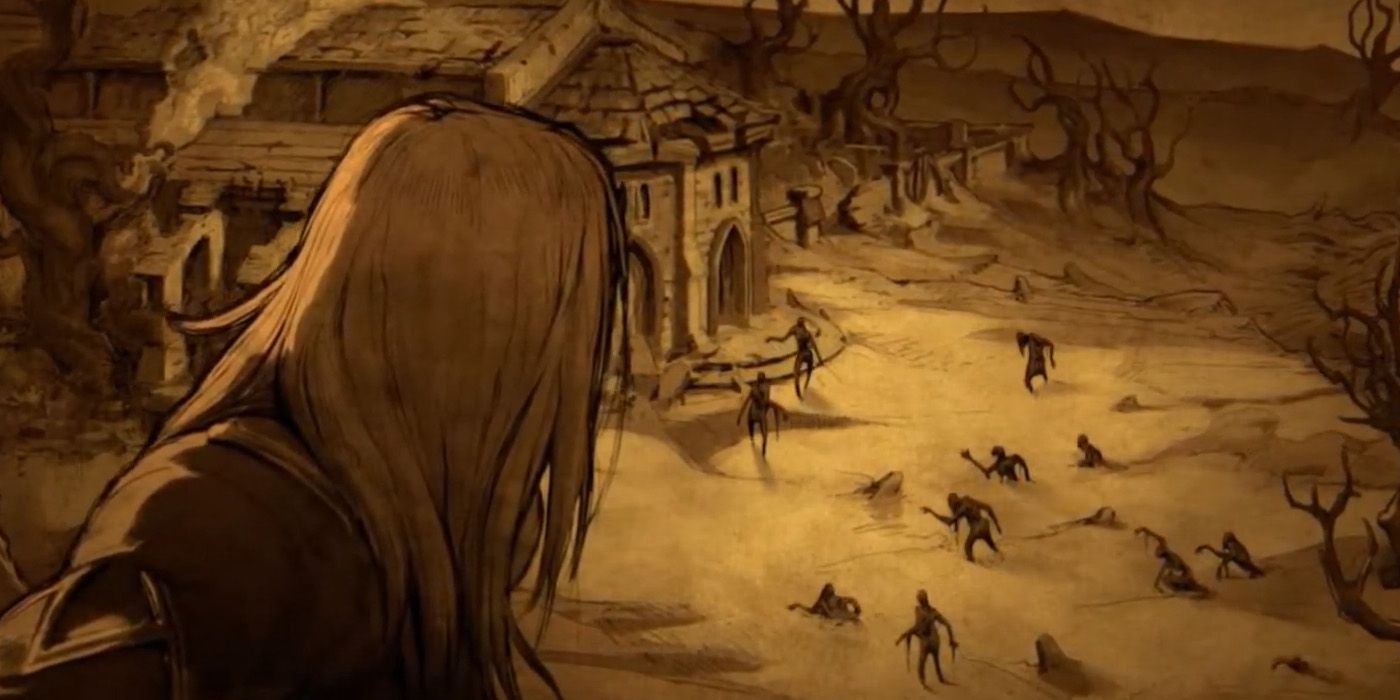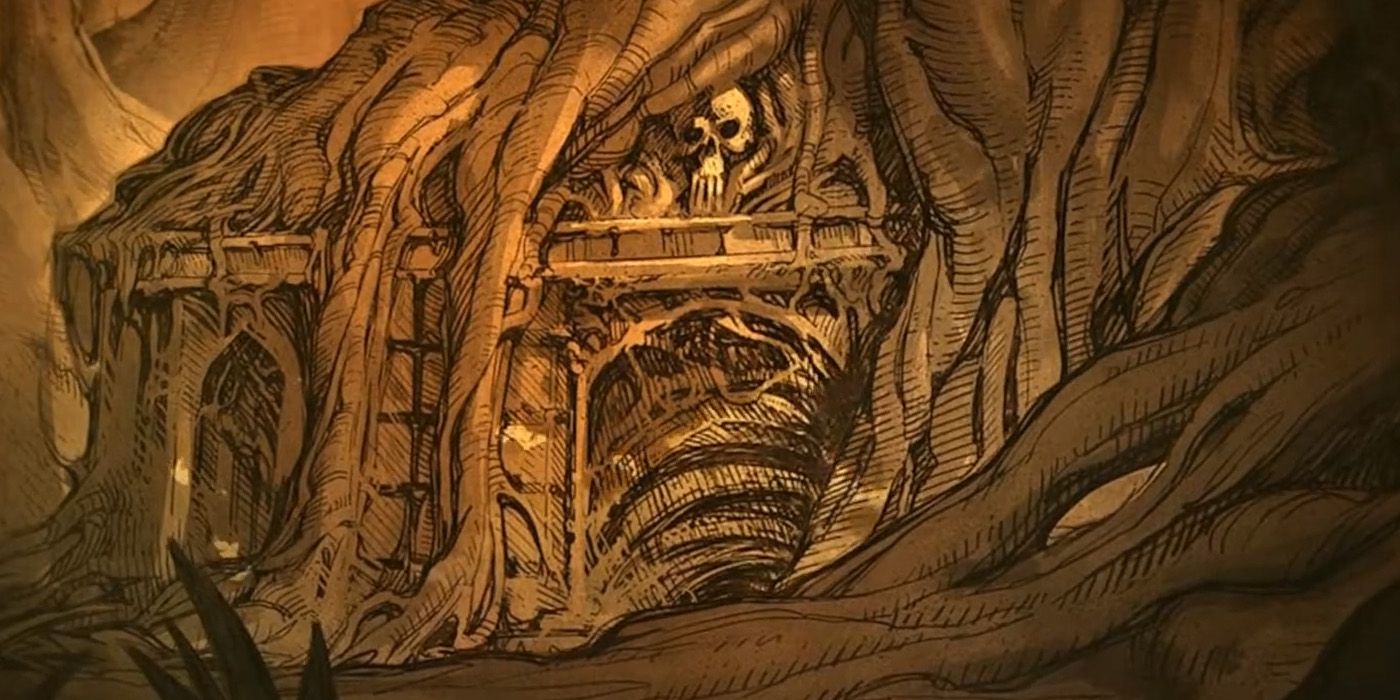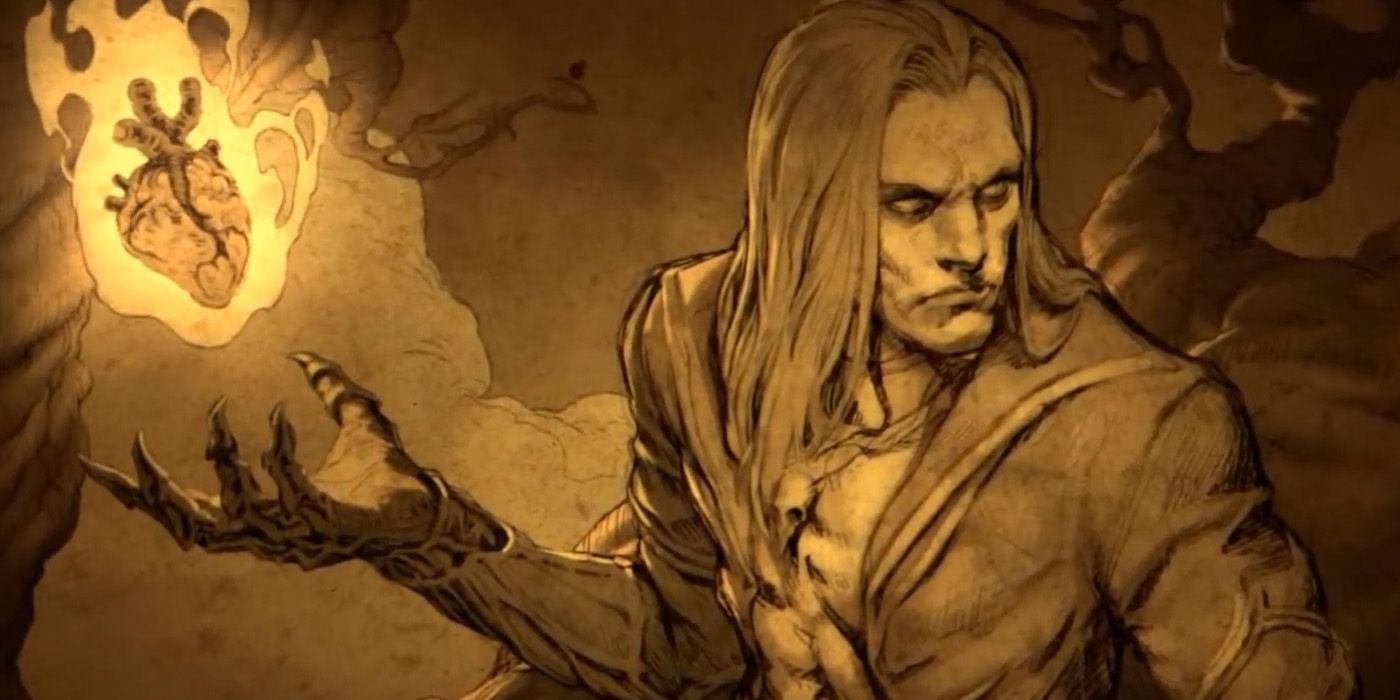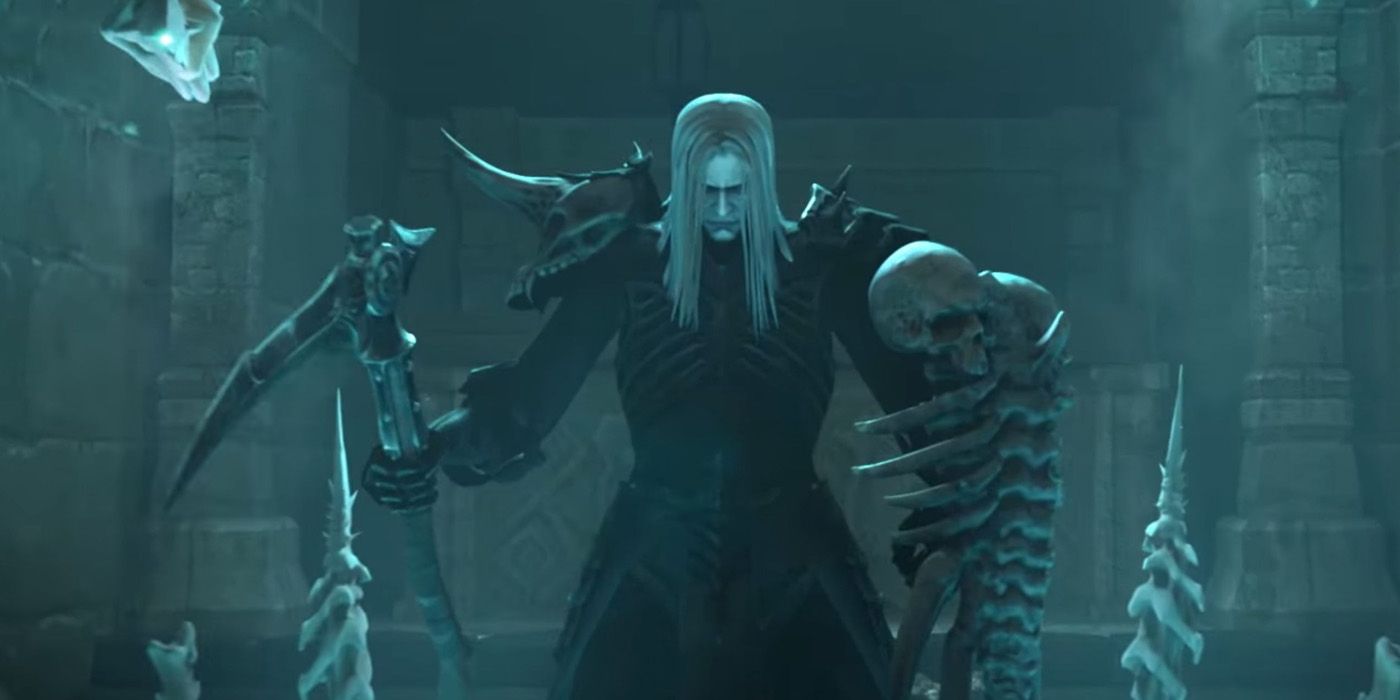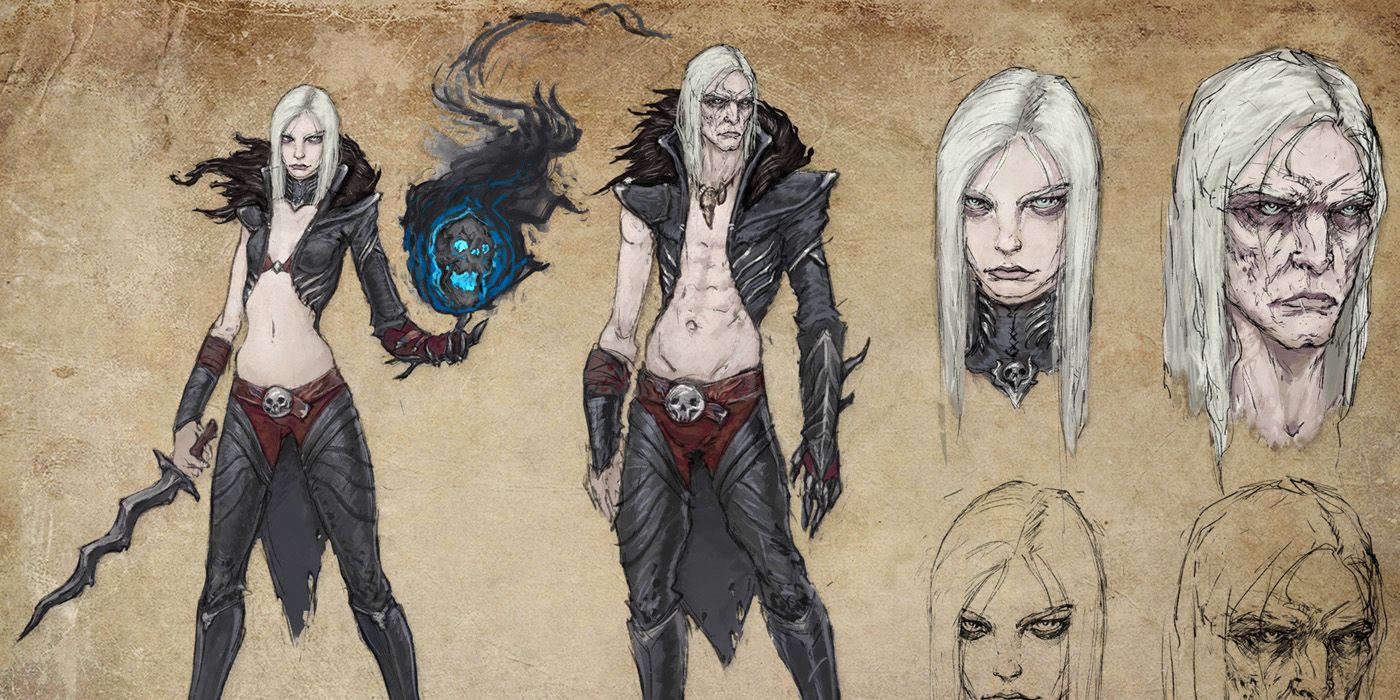In Diablo's world of Sanctuary, angels and demons influence the flow of Order and Chaos. However, Diablo 2's Necromancers prove they can control such forces, just as they can manipulate the flow of life and death. Blizzard's rendition of the Necromancer has amazed players with their horrific rendition of summoning, blood magic, and bone manipulation in the war against the Burning Hells.
The Necromancer's return in Diablo 3 proved the potential of the class as an integral part of Sanctuary's overall lore. However, Necromancers seem to have secrets of their own that players might want to know before playing the class. Just what pieces of trivia should players learn about the Necromancers in Diablo?
10 Rathma Wasn't A Necromancer
The Priests of Rathma can trace their organization's roots to Linarian, the Nephalem child of Inarius and Lilith. He eventually met Trag'Oul, a dragon-like being that served as the Guardian of Sanctuary. It's through Trag'Oul that Linarian learned of the Great Balance, or how Order and Chaos, Light and Dark, and Life and Death interact. Eventually, Linarian became one of the most powerful of the Ancients, aka the first generation of Nephalem. In due time, Linarian would adopt the name "Rathma," which meant "student" in Trag'Oul's tongue.
Rathma cannot be considered a "Necromancer" as the term wasn't coined at the time. However, of spellcasters of his generation, only Rathma had the intimation connection with the Great Balance that no other magic-users had.
9 Enter Mendeln
While Rathma and Trag'Oul studied the Great Balance, a particular human captured their attention: Mendeln ul-Diomed, the younger brother of Uldyssian. Throughout the years, Mendeln followed Uldyssian in his journey to "reawaken" the Nephalem. Meanwhile, Rathma and Trag'Oul took their time to illuminate Mendeln into the ways of the Great Balance.
When Uldyssian performed his last sacrifice, Mendeln remained the only human to ever remember the events of that day. It seems Mendeln kept his memories due to the effects of his stay with Rathma and Trag'Oul. After the end of the Sin War, Trag'Oul bestowed upon Mendeln the name "Kalan" or "Teacher."
8 Kalan Formed The Priesthood
Despite their name, the Priests of Rathma owe their formation to Kalan, the second of Trag'Oul's apprentices. After Rathma and Trag'Oul taught Kalan the ways of the Great Balance, they tasked the student to form a group that will practice their beliefs. Meanwhile, Kalan recorded everything he knew and would come to learn into the Books of Kalan, sacred texts to the Necromancers.
As part of their primary philosophy, Kalan would dispatch Necromancers from within the Necropolis to places with disturbances in the Balance. In turn, Necromancers become tasked with restoring the Balance even at the risk of their own lives.
7 Essence Is Similar To Prime Energy
Thanks to Diablo 3's resource system, Necromancers can further visualize the way they interact with the Great Balance. As it turns out, Necromancers tap into the Essence to cast their spells. In magic, Essence serves as the energy that gives life to any kind of being, be it mortals or otherwise. Unfortunately, unlike other resources, Essence is static and can only be gathered from two sources: the environment and the Necromancers themselves.
Others denote the similarity between Essence and Prime Energy, the same resource used by the Askari or Amazons. Unlike the Amazons that use Prime Energy to augment their attributes, Necromancers use Prime Energy to activate their Curses.
6 The Only Humans Who Know Necromancy
The Priests of Rathma get a bad reputation in Sanctuary due to their knowledge of the supposed "dark arts." Unfortunately, ordinary people call these the "dark arts" as they involve tapping into the forces of Death and Chaos, things deemed too dangerous by Mage Clans. It also doesn't help that Necromancers remain the only humans who can reanimate corpses and control the dead, something only demonkind naturally have the ability to do.
In fact, Necromancers only follow strict rules with regards to their studies. For instance, beginner priests start their training by casting their emotions aside. This strict training would allow them to accept the realities of the Great Balance and form more informed decisions without risking corruption. Furthermore, the intricate nature of the Balance allows the Necromancers to fine-tune their spells, especially since they rely on Essence. This strict training made Necromancers immune to the corruption that plague other Mage Clans. Unfortunately, as Necromancers seem devoid of emotion, they're often perceived as sinister or uncaring.
5 Necromancers Uphold The Balance Their Way
Despite the strict nature of their studies, Necromancers don't have to follow a "set path" to uphold the Great Balance. Instead, they are encouraged to follow the method that bests preserves the Balance in a given area. This explains how even the Necromancer in Diablo 3, a mere apprentice, managed to defeat powerful bosses such as the Prime Evil.
Additionally, Necromancers are expected to take on apprentices in their missions outside the Necropolis. This process allows them to teach the ways of the Balance to potential recruits. However, few of these potential recruits ever make it to the Necropolis, and fewer still become full Necromancers.
4 Necromancers Live Inside A Tree
People who have heard of Necromancers may imagine them living in cemeteries and other otherwise-haunted places. In the case of the Priests of Rathma, this speculation is half-true. In fact, the Priests of Rathma live inside the Necropolis. As the name implies, this location is a vast underground city located deep in the jungles of Kehjistan. However, people can't easily find the Necropolis, as its entrance lies deep inside a massive tree.
Due to their isolated nature, the Necromancers developed a mindset completely in tune with their studies. This allowed them to avoid the need for them to "assimilate" into a formal mage clan, especially given the eccentric nature of their arcane studies.
3 Originally Intended As A Spellcaster Subclass
In the early days of Diablo 2's development, the Necromancer may have never made it as a separate class. It appears the Necromancer served as a subclass or a variety of the spellcaster archetype. Players might notice the Necromancers in early concept art as having robes or even holding Staves. Save for the bones in their armor, the overall motif made the early Necromancer design not too dissimilar with the Sorceress'.
Thankfully, the final design of the Necromancer enabled it to become separate enough to the other spellcasters in the game. Unlike the Sorcerer and the Druid, the Necromancer focuses more on manipulating bones, activating curses, and summoning the undead.
2 The Lore Explains Their Bone Design
When Necromancers got introduced in Diablo 2, their visual appearance and clothing focused on death and bone. This visual take gave them a unique edginess compared to other classes, permitting Necromancers to represent the dark and gritty nature of the franchise. The lore also gives context on the prominence of bone in the armors of the Necromancers.
As per Necromancer history, Kalan's ordered the newly-organized Priests of Rathma to have bones displayed in their armor. According to Kalan, this motif symbolizes the Necromancers' mastery over death and their attunement with the Great Balance.
1 The Devs Focused On Blood For D3
Fans initially thought the Witch Doctor replaced the Necromancer in the release of Diablo 3. However, devs were quick to point out that the Witch Doctor's primary difference versus the Necromancer would be the former's direct damage and pet-focused builds. Blizzard added that the presence of the Witch Doctor won't impede a potential Necromancer in the game.
The devs ensured the Necromancer from Diablo 2 would fit the skill-oriented and fast-paced nature of the game. Blizzard also wanted the Necromancer to focus on blood, something its previous iteration lacked. This factor resulted in the Necromancers in Diablo 3 having a dedicated Blood-related skillset.

